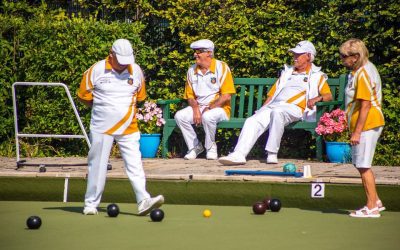Changing Bowls
Most of the important information concerned with either using different sets of bowls, changing bowls or delivering the wrong bowls is covered here.
Trial ends: According to the laws of the game a player can use any legal bowls, from different sets, for the trial ends. The trial ends are not ‘the game’. So, a player can ‘try out’ their various bowls during trial ends, but, can only deliver the agreed number of bowls. So if it is 2 bowls for trial ends in each direction, only 2 bowls can be used each end, from any set.
The Law:
5.1 Trial ends
5.1.4 Each player must not use more than the number of bowls being used during the game. If a player or an umpire notices that a player is using more than the permitted number of bowls, the defaulting player will lose the right to play any bowls remaining to be played in the trial ends.
5.1.5 Each player can use any combination of bowls taken from different sets of bowls
This is why trial ends are important, if playing at familiar or unfamiliar venue. Players can work out the conditions, and either by using just one set of bowls or a couple of set of bowls for trial ends it helps players work out how the green is playing. Trial ends are important, and must be used. ‘One on the first two ends’ (which is rarely a written law in a competition or league) is a disadvantage to both teams. Agreeing to it at your home venue could be costing you shots, because your opposition will only lose a maximum of 1 shot in each of the first 2 ends, where potentially (and more likely) they would lose more than a shot during the first couple of ends on an unfamilar green. So tactically, it is better to agree to ‘one on the first two’ away from home, but ideally trial ends are a better option at home and on unfamiliar venues.
According to the laws of the game a player must use legal bowls, from THE SAME set, during ‘the game’.
Further laws covered in: Section 2 – Game anomalies
29.1 Playing out of turn
29.1.1 If a player plays out of turn, the opposing skip can stop the bowl and return it to the player to play it in the proper order.
29.1.2 If the bowl has come to rest and has not disturbed the head, them opposing skip must choose whether to:
29.1.2.1 leave the head as it is and have their team play two bowls one after the other to get back to the proper order of play; or
29.1.2.2 return the bowl and get back to the proper order of play.
29.1.3 If the bowl has disturbed the head, the opposing skip must choose whether to:
29.1.3.1 leave the disturbed head as it is and have their team play two bowls one after the other to get back to the proper order of play;
29.1.3.2 replace the head in its former position, return the bowl and go back to the proper order of play; or
29.1.3.3 declare the end dead.
29.1.4 If a bowl has been played by each team or player in Singles before the players discover that one of them has played out of turn, play in that end must continue in that order.
29.2 Playing another player’s bowl
29.2.1 If a player plays another player’s bowl instead of their own, the other player’s bowl must be replaced with the player’s own bowl.
29.2.2 If the bowl which was replaced was marked or nominated as a toucher, the player’s own bowl must be marked or nominated as a toucher.
29.3 Changing bowls
29.3.1 If a player changes their set of bowls during an uninterrupted game, or during a game that has been stopped as described in law 33 and continued on the same day, the game must be forfeited to the opponent unless:
29.3.1.1 the player changes their set because a bowl has been damaged (see law 31); or
29.3.1.2 the game has been moved between a vegetation surface and a synthetic or indoor surface.
29.3.2 If a game that has been stopped as described in law 33 is continued on another day, a player can use a different set of bowls to the set they used during the game that was stopped.






